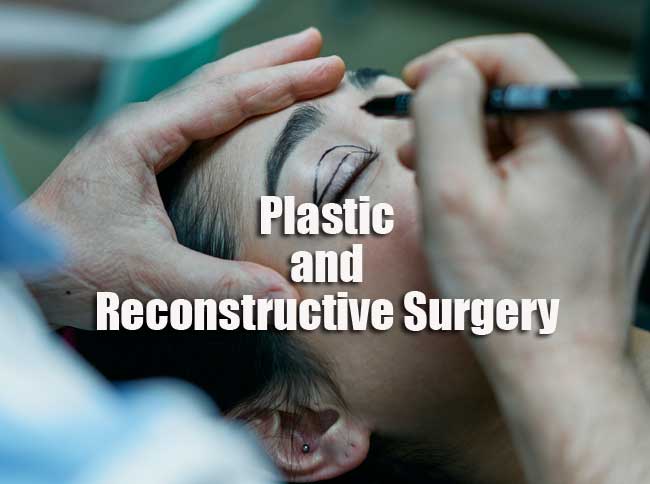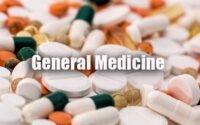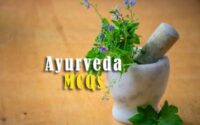Plastic and Reconstructive Surgery Practice Set
Plastic and Reconstructive Surgery Practice Set paper for the written examination is given below. Candidates who are looking for Plastic and Reconstructive Surgery exam Practice Set paper can find in this section. The applied candidates who are getting prepared for the Plastic and Reconstructive Surgery can view this page for the Plastic and Reconstructive Surgery Last Ten Years Practice Set Papers.

Download the Plastic and Reconstructive Surgery Practice Set & Solutions & make it as a reference for your exam preparation. Take advantage of these Plastic and Reconstructive Surgery Practice Set Papers in a proper manner to get qualifying Marks. Last 5 years Plastic and Reconstructive Surgery Practice Set Papers provided here. Candidates who are applied for the above exam can check and download the Plastic and Reconstructive Surgery Practice Set Papers from here.
Practice Set of Plastic and Reconstructive Surgery
1. Imaging characteristics suggestive of malignant nerve sheath tumours include all except
(1) Larger size and perilesional oedema
(2) Heterogeneous enhancement
(3) Perilesional enhancement on MRI
(4) Standardized uptake value with fludeoxyglucose F18 on PET less than 4.0
2. A turret exostosis of the proximal phalanx should be treated by
(1) Intralesional excision of the lesion
(2) Marginal excision of lesion and periosteum over it
(3) Wide excision
(4) Radical excision
3. In ‘triple nerve palsy’ in Leprosy, surgical intervention includes
(1) Transfer of pronator teres to extensor carpi radialis brevis (ECRB) to provide wrist extension
(2) Flexor carpi radialis (FCR) is transferred to provide four finger extension and palmaris longus for thumb extension
(3) Flexor digitorum superficialis of middle finger transfer to provide MC flexion of four fingers and FDS of ring finger for opponensplasty
(4) All of the above
4. Malignant giant cell tumour of the distal end of radius that has not broken through the cortex should be treated by
(1) Shelled out in pseudo capsule
(2) Intra’ compartmental enbloc excision with cuff of normal tissue
(3) Extra. compartmental enbloc excision
(4) None of the above
5. In a freshly burned hand, the common position of hand, a recipe for disaster, that is assumed by the patient is
(1) position of comfort
(2) position of immobilisation
(3) position of function
(4) safe position
6. The key developments in zone 2 flexor tendon injury repairs are all except
(1) use of a strong core suture — 4/6 strand repair
(2) venting the critical annular pelley
(3) slightly tensional repair and performing digital flexion extension test
(4) late partial range active motion to ensure tendon gliding
7. In nerve injuries, motor fibres are distinguished from sensory fibres in the proximal segment by all except
(1) Internal topography
(2) Intra-operative stimulation
(3) Neurolysis with the eyes
(4) Fascicular identification is not required
8. The commonest inheritance pattern for Duputyren’s disease is
(1) Autosomal recessive
(2) Autosomal dominant
(3) Sex linked dominant
(4) Sex linked recessive
9. The least common sarcoma in the hand is
(1) Chondrosarcoma
(2) Liposarcoma
(3) Synovial sarcoma
(4) Fibro sarcoma
10. Lasers produce their effect through which one of the following:
(1) Photothermolysis
(2) Vaporisation
(3) Thermocoagulation
(4) Photocoagulation
11. Which filler substance is correctly matched with its trade name ?
(1) Hydroxyapatite and Radiesse®
(2) Hyaluronic acid and Sculptura®
(3) Acellular cadaveric dermis and Zyderm®
(4) Large particle hyaluronic acid and Bioalcamid®
12. The following classifications are relevant to alopecia
(1) Ludwig
(2) Norwood
(3) McCauley
(4) All of the above
13. Which of the following techniques of face lift has the highest rate of facial nerve damage ?
(1) Deep plane
(2) Sub Superficial Musculo Aponeurotic System (SMAS)
(3) Subcutaneous plane
(4) Sub periosteal
14. Which of the following lasers is matched with its correct wave length ?
(1) Alexandrite – 755 nm
(2) Carbon dioxide — 2940 nm
(3) Erbium — YAG — 10,600 nm
(4) KTP — 1064 nm
15. Botulinum toxin
(1) is derived from Bacillus anthracis
(2) is derived from Bacillus botulinum
(3) is derived from spore-forming anaerobic bacteria
(4) can cause tetanus
16. Which of the following subcutaneous infiltration techniques used in a patient undergoing suction lipectomy has an infiltrate to aspirate ratio of 1:1 ?
(1) Dry
(2) Super wet
(3) Tumescent
(4) Wet
17. A patient with true ptosis would have all the following characteristic features except
(1) Upper lid would cover more than 1.0 mm of cornea
(2) Upper lid cannot be moved upwards to clear the cornea
(3) Upper lid skin fold is almost non-existent
(4) The upper eyelid skin hangs down to cover the lid margin
18. Resection of which of the following muscles is most appropriate for treating a forty year old female with transverse rhytids along the root of nose :
(1) Corrugator supercili
(2) Procerus
(3) Frontalis
(4) Orbicularis oculi
19. Regarding structural fat grafting which is true?
(1) It should never be used in the nose
(2) Can be used to augment midface hypoplasia
(3) No risk of blindness when used around the eye
(4) HIV is an absolute contraindication
20. Which of the following is not a useful nerve block for peri-orbital surgery ?
(1) Infra-orbital nerve block
(2) Anterior ethmoidal nerve block
(3) Zygomaticofacial nerve block
(4) Frontal nerve block
| Practice Set | MCQs |
| Quiz | Questions and Answers |
21. The risk of nerve injury in danger zone in forehead plasty is to
(1) Supratrochlear nerve
(2) Superficial division of supraorbital nerve
(3) Deep division of supraorbital nerve
(4) Norisk of nerve injury
22. The advantages of closed rhinoplasty include all except
(1) No external scar
(2) Makes dissection of alar cartilages difficult especially in malposition
(3) Permits creation of a precise pocket for graft material without need for fixation
(4) Allows composite grafting to alar rims
23. The most important single variable in the coverage achievable in hair transplantation
(1) Hair length
(2) Hair density
(3) Total area coverage
(4) Hair diameter
24. All are true for spreader grafts except
(1) they can be used to stent open the internal nasal valve
(2) stabilize the septum
(3) preserve or enhance the dorsal aesthetic lines
(4) secured with 5-0 Nylon in vertical mattress fashion
25. The advantages of CO, laser cutaneous resurfacing over Erbium : YAG laser include all except
(1) More tissue contraction
(2) Excellent haemostaiss
(3) Shorter post laser recovery
(4) Long lasting results
26. The term ‘SOOF’ in relation to midfacial aging refers to which one of the following :
(1) Sub orbicularis oculi fat
(2) Sub orbicularis oris fat
(3) Superficial orbicularis oris fat resection
(4) Supra fascial orbicularis oris fat transfer
27. Which one of the following areas is not favourable for liposuction ?
(1) Lateral side of arm
(2) Posterior side of arm
(3) Medial side of arm
(4) Anterior side of arm
28. Morbid obesity is
(1) BMI-25 TO 29.9
(2) BMI-> 30
(3) BMI-35 TO 39.9
(4) BMI> 40
29. The most common location in arm for a redundant skin in the massive weight loss patient is
(1) Anterior axillary fold
(2) Posterior axillary fold
(3) Both (1) and (2)
(4) None of the above
30. The last cell to enter wound during inflammatory phase of wound healing is:
(1) Platelet
(2) Neutrophil
(3) Lymphocyte
(4) Macrophages/Monocyte
31. Dermatome was developed by
(1) Padgett, a plastic surgeon
(2) Hood, a mechanical engineer
(3) Padgett and Blair, plastic surgeons
(4) Padgett, a plastic surgeon and Hood, a mechanical engineer
32. When a scar does not cross 4 line of minimal tension, revision is best done by:
(1) Z plasty
(2) W plasty
(3) Fusiform excision
(4) M plasty
33. In autosomal dominant inheritance, an affected individual has the following chance of having an affected offspring :
(1) 25 percent
(2) 50 percent
(3) 75 percent
(4) 100 percent
34. Which is not true of a ‘SHAFT’ syndrome patient ?
(1) sad and hostile
(2) sharp and hostile
(3) anxious
(4) frustrated and tenacious
35. Following is true for midazolam, except
(1) it is a benzodiazepine
(2) is a short acting agent that acts predominantly on central nervous system
(3) its effect is not dose dependent
(4) can be used as a premedication sedative
36. For medical photography in plastic surgery, a patient should be placed at a distance of to eliminate shadows :
(1) 1 foot in front of the background
(2) 2 feet in front of the background
(3) 3 feet in front of the background
(4) 4 feet in front of the background
37. An absolute contraindication for split skin grafting of a granulating wound is the presence of :
(1) Staphylococci
(2) B-hemolytic streptococci streptococcus pyogenes
(3) Pseudomonas aeruginosa
(4) Bacillus proteus
38. Every third amino acid in collagen is
(1) Proline
(2) Hydroxyproline
(3) Glycine
(4) Hydroxylysine
39. Body mass index is calculated by
(1) Ratio of soft tissue mass to bone mass
(2) Multiplying height (in metres) by weight (in kgm)
(3) By dividing body weight in kgm by square of body height in metres
(4) By dividing twice the body weight in kgm by half the height in metres
40. Which of these conditions is a disorder of collagen ?
(1) Marfan syndrome
(2) Cutis laxa
(3) Progeria
(4) Osteogenesis imperfecta
41. Knowledge of statistical concepts is important to practice evidence based plastic surgery. Following statements are true except –
(1) Regression analysis is used to find how one set of data relates to another.
(2) Correlation measures the strength of association between variables.
(3) P value gives the probability of any observed difference having happened by chance.
(4) Mode is the point which has half the values above and half the values below.
42. Who is considered as ‘Father of Foetal Surgery’ ?
(1) William Liley
(2) Harold Gillies
(3) Joseph Lister
(4) Mc Indoe
43. Who performed and published the first successful free ‘great toe to hand’ transfer in humans ”?
(1) Nakayama (1964)
(2) Komatsu and Tamai (1965)
(3) Cobbett (1968)
(4) Mc Lean and Buncke (1972)
44. Thinning of a paramedian forehead flap for nasal reconstruction is
(1) Never safe
(2) Only feasible at the distal 1 cm of the flap
(3) Safest, if performed at an intermediate stage
(4) Generally, not necessary to achieve a good result


